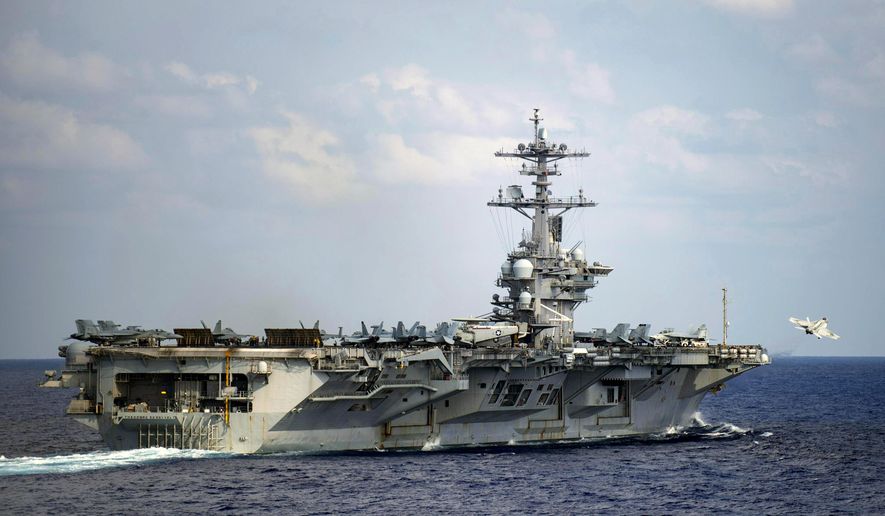The Centers for Disease Control and Prevention signed off on the original plan that sent a US Navy aircraft carrier to Vietnam for a port visit that later resulted in a coronavirus outbreak aboard the ship, the Navy’s top admiral in the Pacific said.
The USS Theodore Roosevelt’s four-day port visit to Danang, Vietnam in early March also was done with the “complete collaboration” of military officials and the US embassy, said Admiral Philip S. Davidson, commander of the U.S. Indo-Pacific Command.
“The mitigations that were placed on that port visit were taken at the advice of medical experts including the CDC, our CDC rep in Vietnam and across the Navy medical apparatus going forward,” Admiral Davidson said this week during a discussion sponsored by the Washington, D.C.-based Defense Writers Group.
The Roosevelt was only the second U.S. aircraft carrier to visit Vietnam since the fall of Saigon in 1975. It was meant to commemorate 25 years’ worth of diplomatic relations between the two former foes.
“The decision to go, which was made in full collaboration and understanding of what the CDC had established around the world, was completely aligned with Department of State standards for travel,” Admiral Davidson said.
More than 1,000 sailors aboard the Roosevelt became infected with COVID-19 following the port visit to Vietnam and Navy Chief Petty Officer Justin Calderone, a crewman aboard the carrier, died following a medical emergency believed linked to the virus.
Navy officials initially believed the virus might have come aboard the Roosevelt through a routine supply run on one of the ship’s Carrier Onboard Delivery (COD) flights. They later concluded it was the port stop in Danang that triggered the outbreak.
In the later uproar, the ship’s captain was fired from his job and the former Navy secretary also was pushed out of his position.
Admiral Davidson declined to comment on the investigation into the incident, saying anything he said as overall US commander in the region could result in influencing the process.
• Mike Glenn can be reached at mglenn@washingtontimes.com.




Please read our comment policy before commenting.